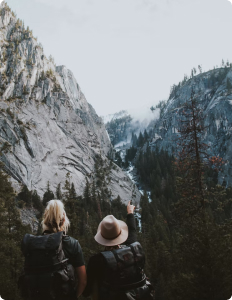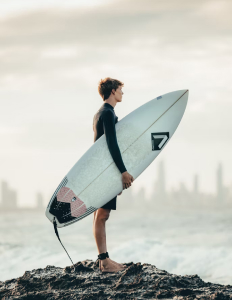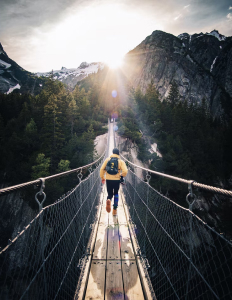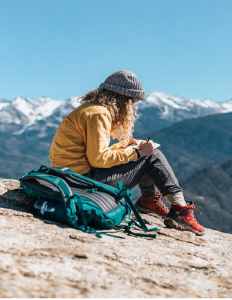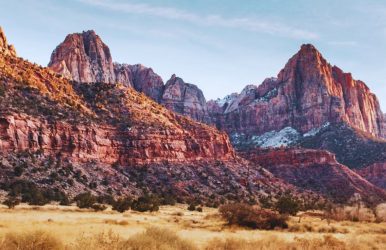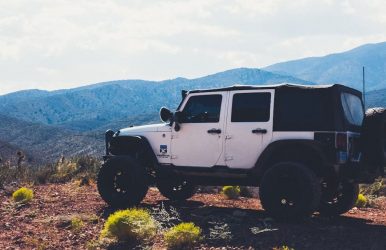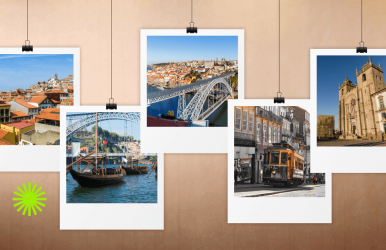What Are The Raja Ampat Liveaboard Tips? What Are The Best Liveaboard Diving Trips In Raja Ampat?
BY Sibashree Dec 27, 2025
Suzanne, a corporate professional and my colleague, all of 26, was back from what she called a “Trip to Paradise.” I knew that she was not exaggerating, as Raja Ampat is indeed called “The Last Paradise.” It also has the nickname, “The Amazon of the Seas.” What else would you call a place that has close to 75% of the total coral and fish found in the world? Also, this massive archipelago, with a network of nine protected areas, has diving sites, which are around 100s of miles apart from each other. The nine protected areas here are: Dampier Strait MPA Misool Islands MPA Fam Islands MPA West Waigeo MPA Asia & Ayau Islands MPA Mayalibit Bay MPA Batanta Marine Park Kofiau & Boo Islands MPA Raja Ampat Islands and Surrounding Seas National MPA Also, the main diving zones in Raja Ampat are Dampier Strait in the central region, Misool in the south, and the sites in the north. The diving resorts are mainly in and around the Dampier Strait, and Misool has one, the Misool Resort. However, staying at a diving resort will never help create a diving route or itinerary between the northern and southern diving sites. That means, if you are staying in the central region near the Dampier Strait, you cannot practically travel to Misool in the south. So, choosing a Raja Ampat liveaboard is not a luxury. It is a necessity to explore the full spectrum of diving fun Raja Ampat has to offer. And this guide will cut through the noise of booking aggregators and give you the practical Raja Ampat liveaboard tips you need to choose the right boat, the right season, and the right cabin. Why You Must Choose The Liveaboards To See The “Real” Raja Ampat? As I was saying, when you stay in a land-based diving resort in the central region and near the Dampier Strait, you can visit the iconic sites such as Cape Kri, but your access remains limited to a small radius. However, with a liveaboard as your accommodation, you will get a moving diving platform, taking you to all corners of Raja Ampat. 1. Access To Misool Misool, or the southern region of Raja Ampat, is home to the most beautiful soft corals in the world. Also, the Magic Mountain in Misool is the main Manta Ray site in Raja Ampat. If you want to keep your activities limited to Misool, you can choose Misool Eco Resort as your accommodation. However, a liveaboard is a more feasible option here, and it will give you better mobility. 2. Access To Wayag If you want to see the most dramatic limestone formations in Raja Ampat, you will have to dive at Wayag and other sites in the north. Now, the northern diving sites of Raja Ampat are strictly liveaboard territories. Furthermore, with a liveaboard as your accommodation, you can complete at least 3 to 4 dives in a day. For example, have your breakfast early in the morning, wait for 2 to 3 hours, and go for a dive. Then, have your lunch, wait for two hours, and go for the afternoon dive. You can even go for a night dive. What Are The Best Liveaboard Diving Trips In Raja Ampat? Choosing The Route And Three Main Itineraries As a diver, I often get confused about the route. Will I go north? Will I go south? Or, should I go for a combined route with the north, central, and south routes? Now, the best choice for the route of your diving trips in Raja Ampat will depend on the season and the kind of open ocean experience you are looking for. 1. The Best Of Everything: North And South Combined Duration: 10 – 12 Nights If you are a devoted and advanced diver who wants to tick off all the diving experiences, you must choose a combination of the north and south diving routes. This route comprises: The Mantas of Misool The Currents of Dampier And The Lagoons of Wayag However, if you are planning such an itinerary, you must be prepared to travel for and spend many nights in the open ocean. Moving between regions will not be an easy task. 2. The North & Central Route (Wayag & Dampier) Duration: 7 – 9 Nights The central route is accessible throughout the year. However, October to May is the ideal season if you want to combine the north and central routes. In the north, you can go for a combined Wayag lagoon hike and a pelagic-heavy diving below. As you dive deeper, expect drift dives at The Passage. Furthermore, Blue Magic is the site where you will experience high current. Also, the Dampier Strait is the hub of diving in Raja Ampat and Indonesia. However, if you want to avoid the crowd, Wayag will be your go-to destination. The water here is the most cinematic, with the sunlight changing the color of the water throughout the day. 3. The South Route (Misool) Duration: 7-9 Nights Protected by the Misool Islands MPA, Misool remains the “Photographer’s Route.” You will find large sea fans, huge schools of fish, and orange soft corals here. However, Misool is only accessible during the dry season, and despite the presence of the Misool Eco Resort, liveaboards are the main accommodation here. Misool is also an NTZ or No-Take Zone. As a result, it has helped in the revitalization of coral health and fish biomass. Boo Windows and Magic Mountain are some of the iconic diving sites in Misool. Also, the Jellyfish Lake is a unique, secluded lagoon here. You can swim with non-stinging jellyfish here. Choose Your Favorite Diving Route In Raja Ampat: A Quick Decision Matrix Still confused about the best diving route to choose? Have a quick look at this decision matrix. FeatureNorth (Wayag/Kawe)Central (Dampier)South (Misool)Primary Attraction• Topography• Lagoons• Pelagics• Fish Biomass• Currents• Soft and Colorful Corals • MantasTopside Scenery10/10 (Iconic Views)8/10 (Jungle Islands)9/10 (Karst Peaks)Water TemperatureWarm (28-30°C)Warm (28-30°C)Warm (28-30°C)Best ForAdventure & ViewsAdrenaline & Fish ActionPhotography & Color Raja Ampat Liveaboard Tips: A Quick 5-Day Itinerary (Central And North Zones) If you don’t have the time or budget to do a best-of-everything tour, you can choose a quick 5-Day central and north tour with the central and north zones in focus. DaysLocation/RouteFocusDiving PlanKey Notes and Pro TipsDay 1Arrival in Sorong (SOQ)Logistics & RecoveryN/A• Arrival in Sorong via Jakarta (CGK) or Makassar (UPG).• Transfer to Swiss-Belhotel Sorong or A Similar Accommodation.• Assemble dive gear, test strobes, charge batteries.Day 2Sorong to Central Raja Ampat (Dampier Strait)Orientation and Easy Diving Two Dives and Optional Night Dive • Harbor Transfer in the Morning.• Board the Liveaboard and Get Done with Cabin Assignment and Safety Briefing.• Light Lunch Onboard.• Check Dives on Gentle Slopes and Bommies.• Conditions: Mild Current, Warm Water (28–29°C). • Night Dive on a Sheltered Reef or Jetty.Day 3Dampier StraitHigh-energy Fish & Currents. 3-4 Dives• Cape Kri (World-Record Fish Biomass)• Sardine Reef (Snapper & Barracuda Tornadoes)• Blue Magic (Manta Rays, Strong Current)• Optional Night Dive• Skills Required:Negative Entries and Reef Hook Proficiency.Day 4Dampier Strait to Kawe (North)Transition North and Scenery3 Dives• The Passage (Mangroves & Surreal Lighting).• Citrus Ridge (Soft Corals & Macro)• Afternoon Dive en Route North. • Evening Scenic Sail toward Kawe with Jungle Islands and Limestone Cliffs at Sunset. • Short, Comfortable Crossing.Day 5North Raja Ampat (Kawe & Wayag) to SorongIconic Raja Ampat Finale2 Dives• Black Rock (Sharks, Jacks, Heavy current).• Eagle Rock (Fish Explosions). • Optional Short Wayag Lagoon Viewpoint Visit if Weather Permits• Afternoon Return to Sorong. • No Same-Day International Flights.• Overnight stay recommended. If You Are Going From The Central Zone To The South: A Reality Check Remember that a journey from the diving sites in the central zone to the south is going to be logistically challenging. Exploring the south route itself takes around 7-9 days. You have to cross the Seram Sea if you are traveling from the dive sites in the central zone to the south. I have not come across any guide that talks about this challenge. Here, crossing the open sea is a 10-12-hour journey. You have to make a journey overnight. October to March is the best time for diving in the central and south zones of Raja Ampat. However, there can be sudden storms or strong winds causing occasional disturbance in your diving sessions or during transitions. Also, consider that there will be a 10-12-hour journey in the Open Sea. So, there can be sea sickness. So, you must start taking the medication before the captain announces the crossing. You don’t need to wait until you feel nauseous. Budget Vs. Luxury Raja Ampat Liveaboard Tips: What Do You Actually Get? Liveaboards in Raja Ampat can be converted from traditional boats. These can also function as 5-star hotels. A student or a young professional, traveling solo, will, of course, opt for the budget-friendly converted boats. On the other hand, the luxury liveaboards offer free satellite internet connection and free Nitrox. Here are the things you need to know about these liveaboards. 1. Budget Phinisis ($250 - $350/Night) These are traditional Indonesian wooden schooners. You will get bunk beds in small cabins, and sometimes the bathroom facility will be shared. Also, you will get tasty but simple local food such as Nasi Goreng and fish. However, these boats might have the dive deck at the front of the boat. Moreover, there is no dedicated camera room in these boats. Here is our pick of the top three budget-friendly liveaboards. 2. Mid-Range ($350 - $550/Night) Boats such as The Mermaid or Black Manta fall into the mid-range liveaboard categories. Along with the amenities offered by the traditional and budget-friendly boats, these boats also have the following. Nitrox Availability En-suite Bathrooms with Hot Water Western and Indonesian Buffet 3. Luxury Yachts ($600+/Night) These luxury yachts have big master suites with ocean views. It also has jacuzzis on deck, massage therapists, and a 1:1 or 2:1 diver-to-guide ratio. Furthermore, it often includes free Nitrox and satellite internet. However, you must remember that the engine room is almost always at the back of these luxury boats. To avoid this “Engine Room Trap,” you must choose a forward cabin and enjoy a quiet sleep. You must avoid the lower decks and rear cabins. Otherwise, you will hear the noise of the engine, and you may even feel uncomfortable with the smell of the exhaust fumes. Our Top 3 Liveaboards In Raja Ampat By Budget Have a look at the table below to know about our pick of the top 2 liveaboards by budget. Budget LevelBoat RecommendationWhy We Love It Budget FriendlyRaja Ampat Aggressor• Reputable Standard• Great Safety Record• Special RunsMid-Range ValueThe Mermaid II• Steel Hull, More Stable than Wood• Huge Dive Deck• Great FoodLuxuryDamai I or II• Choose Your Dive ItineraryHuge Cabins Essential Practical Tips For Liveaboard Life Managing the currents of the Indonesian water, the use of Nitrox, and camera table etiquette are the things you need to keep in mind for the ultimate liveaboard trips in Raja Ampat. 1. Manage The "Indonesian Throughflow" (Currents) The current in the Raja Ampat waters is what brings the schools of fish. However, because of the current, diving in the water of Raja Ampat is a challenge. Furthermore, in sites such as Blue Magic, you cannot float on the surface, adjusting your mask. You must roll back and descend immediately to grab the reef before the current sweeps you away. In addition, you must have a reef hook when you are diving in the waters of Raja Ampat. You hook the reef hook into a dead rock and then float in the Raja Ampat water. 2. Nitrox: Luxury Or Necessity? Don’t listen to anyone who says that Nitrox is a luxury. If you are attempting 3-4 dives for around 7-10 days, you will need nitrox, for sure. Most diving spots in Raja Ampat have square profiles, meaning you have to remain deep in the water for a long time. So, you have to manage the nitrogen loading to reduce fatigue. Unless you have boarded a luxury liveaboard, you may have to pay $150-$200 extra (per trip) to the boat for nitrox. So, consider this expense in your budget. 3. Camera Table Etiquette Raja Ampat is the international hub for serious and professional photographers. The rigs and accessories they use are sometimes more expensive than cars. So, you cannot keep anything wet on the photography table as it will have dry towels, o-rings, and expensive electronics. The Logistics: Arrival, Departure, And Hidden Costs Have a look at the table below to understand the “flight,” “airport chaos,” and more. Arriving in Sorong (SOQ)• Sorong is the Gateway City. • It is a gritty industrial port.• It is not a tourist destination.Flights• Most flights arrive via Jakarta (CGK) or Makassar (UPG).The "Buffer Day" Rule• Domestic flights in Indonesia are notoriously delayed. • Do not fly in on the morning of your boat's departure. • Arrive one day early and stay at a hotel.Airport Chaos• You will have to say a lot of “No, thank you" and be firm to avoid the porters at the airport. • They will aggressively grab your bag. The Hidden Costs: Raja Ampat Liveaboard Tips When you are comparing the prices of Raja Ampat liveaboards, you have to consider the hidden costs. Otherwise, your budgeting will be in a soup. Hidden CostsExpenses Marine Park & Harbor FeesAround $200 - $250 USD Per PersonYou will have to pay the amount in cash or by credit card on the boat. Fuel SurchargeThe Rise in fuel costs has led to a $150 - $200 USD surcharge.Crew TipsThis is the divers' salary. The standard is 10-15% of the charter price, paid in cash at the end of the trip. That’s it! Get ready with your gear and budget your trip right, and enjoy an unforgettable diveaboard experience in Raja Ampat, Indonesia. Raja Ampat Liveaboard Tips: Frequently Asked Questions (FAQs) Here are the frequently asked questions and answers about the Raja Ampat liveaboard tips. 1. What Is The Best House Reef In Raja Ampat? Find a rich house reef at the front of the Raja Ampat Biodiversity Eco Resorts. This site is accessible by boats only, and based on the current, you will get to see the tip of the reef between two and five meters. Along with reef sharks, you will also find moray eels and turtles. Also, you can snorkel at this site at night to spot the walking shark or the Raja Ampat epaulette shark. 2. How Many Days Are Enough In Raja Ampat? You need at least 8-12 days for a trip to Raja Ampat. However, if you want, you can also do a quick 5-6-day diving expedition in the northern or central sections. Still, if you want to explore the entire south or a combination of the Dampier Strait diving and diving in the north zone (Wayag/Kawe), you will need at least 10 days. However, if you want to dive at the best sites of Raja Ampat, you will need more than 15 days. 3. Is Raja Ampat Okay For Beginner Divers? Yes, Raja Ampat has many diving sites for beginners and intermediate-level divers. The central Damier Strait region, especially, offers excellent visibility, but with a low current. Furthermore, the water here has many shallow reefs. So, you don’t need to get deep into the water.Also, at facilities such as At Raja Ampat Biodiversity Resort, beginners can get personalized training. Thus, you will feel confident and safe in the water, even if you are a beginner. Read Also: Is Amed Bali Worth Visiting? (Location, How To Reach, Things To Do, Nightlife, And More) Is Munduk Bali Worth Visiting? (Direction, Things To Do, Unique Attractions, And More) Bali vs Thailand: Which Place is Better?




